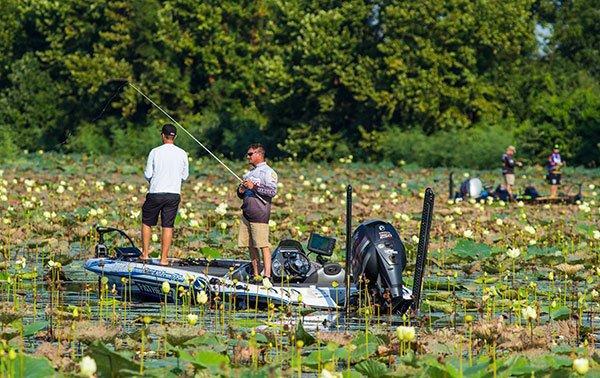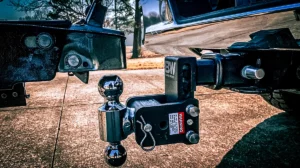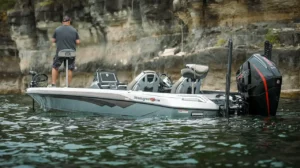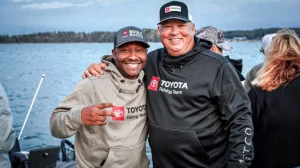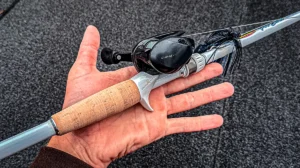When most of us think of bass fishing in heavy cover, we envision big flipping rods, 65-pound braided line, big jigs and monstrous hooksets. While these are certainly effective tools when searching for big bass in thick cover, taking a totally opposite approach can yield outstanding results throughout the summer—especially when targeting highly pressured bass.
According to Trigger X pro Jacob Wheeler, finesse fishing in heavy cover is one of the best ways to catch some of your biggest bass of the year. In the 2013 Forrest Wood Cup on the Red River, Wheeler finished second with many of his key fish falling victim to light line tactics in thick vegetation.
When to consider finesse presentations in heavy cover
“By the time August rolls around, you’ll start seeing me use finesse gear in heavy cover situations more often,” Wheeler said. “Big bass are very spooky, especially when they’ve been bothered by anglers throughout the entire summer, making a subtle presentation key for more bites.”
Differentiating his presentation and bait selection from other anglers’ also plays heavily into Wheeler’s decision to downsize to finesse gear. This has resulted in some huge paydays for him in past tournaments, including the 2013 Forrest Wood Cup.
“If you think about it, 99 percent of the anglers are going to throw frogs and jigs in the heavy cover areas,” Wheeler said. “These fish get wise to our tricks, so I just feel more confident showing them something new. This time of year, you can fish a stretch of cover with a heavy, power fishing setup and catch 10 pounds, then fish the same stretch again with finesse gear and catch a huge sack. It happened for me at the Cup this year and at the B.A.S.S. Northern Open on James River.”
A quick limit on finesse gear can change your strategy
Everyone approaches tournament fishing differently, but Wheeler has found a strategy that has proven very effective for him. During the summer months, he often uses finesse gear in heavy cover to catch a quick limit of bass instead of a slower, ‘grind it out’ approach. A little early momentum totally changes his mindset.
Wheeler caught them early and often with finesse presentations during the 2013 Forrest Wood Cup while others waited for the frog bite to turn on.
“There’s something about having a quick limit in the boat that totally changes the way I think,” Wheeler said. “It’s a big weight off my shoulders, which allows me to gamble a lot more. I’ve never won a tournament without gambling, so finesse presentations are instrumental in my tournament strategy.”
When fishing backwater areas full of thick vegetation at the 2013 Forrest Wood Cup, Wheeler broke out his finesse gear early in the morning before the frog bite turned on.
“A lot of times in summer backwater areas, you’ll get a bunch of missed blowups on your frog early in the day,” Wheeler said. “Before the sun comes up and warms the water, bringing the bait to the top of the water column, I’ll start the morning throwing a simple wacky rig. That’s one of the best ways to combat short strikes on a frog.”
Use quality line and apply constant pressure to increase your hookup ratio
Breakoffs are an inevitable occurrence in our sport. Wheeler, however, enjoys a very high hookup ratio by using quality line that gives him the necessary confidence to get his bait into the nastiest-looking places.
“I honestly don’t remember the last time I’ve lost a fish in the thick stuff while using finesse gear,” Wheeler said. “My default line setup is 10-pound Sufix 832 Ghost Braided Line for my mainline and a 14-pound Sufix Invisiline Castable Fluorocarbon leader. If I’m around really thick pad stems, sometimes I’ll bump my leader to 17-pound line, but never more than 20-pound.”
Wheeler looks to keep his line diameter small, but not necessarily because of line-shy fish. He believes a smaller diameter makes a huge difference in a bait’s action.
“When you have a leader line that’s more than 20-pound test, you’re really going to mess up the action of your bait,” Wheeler said. “I believe pressured bass in heavy cover are much more wary of your presentation rather than your line’s visibility.”
When he gets a bite, Wheeler gives the bass a little extra time to eat his bait. He expects the bass to get hung up in the cover, so he waits a full second between feeling the bite and setting the hook.
“The biggest key to landing these bass is to know you’re going to have to go to them,” Wheeler said. “I have confidence in my tackle, so I don’t feel like I have to rip them out with a giant hookset. When they get hung up in the cover, just keep constant pressure as you go toward them with the trolling motor.”
3 effective finesse presentations for heavy cover
When the fish are pressured and holding tight to heavy cover, Wheeler trusts 3 specific finesse presentations when money is on the line.
- Wacky rig – “If I’m in 3 feet of water or less, I love using a wacky rig,” Wheeler said. “I use a 3/0 VMC Weedless Wacky Hook with a 5-inch watermelon red Trigger X Flutter Worm and fish all the holes in matted grass and in between pads.”
- Light Texas rig – “When the fish are relating to the bottom, I like to use a 1/8-ounce Texas rig with a 3/0 VMC Wide Gap Hook and a Trigger X Spade Tail Worm,” Wheeler said. “It’s better than a shaky head because it won’t get hung up as much and it comes through vegetation very easily.”
- Slider Head – “A Slider Head is a jig head with a pointed nose,” Wheeler said. “The line tie is at a different angle, allowing for a very different fall than a traditional Texas rig. It makes for a more compact presentation for very tight areas, especially when rigged with a 4-inch Trigger X Flutter Worm.”
Late-summer bass fishing can get a bit slow at times, but don’t let it discourage you. If you’re not getting as many bites, try downsizing to finesse gear in heavy cover. It will take some time to get used to, but the potential for big bass is definitely there.


